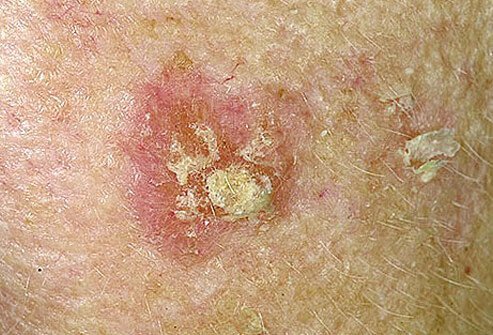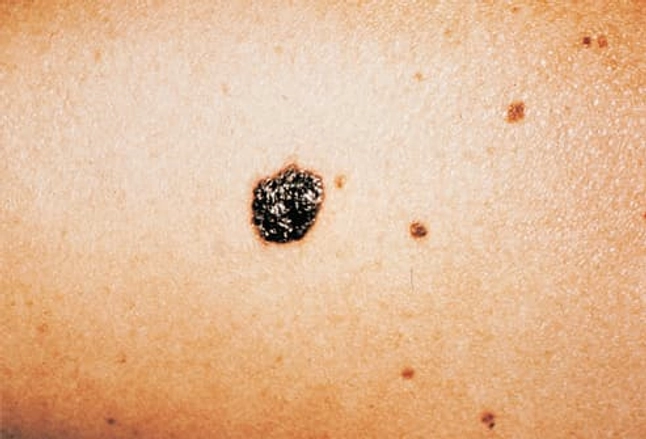
Diagnosed with Cancer? Your two greatest challenges are understanding cancer and understanding possible side effects from chemo and radiation. Knowledge is Power!
Learn about conventional, complementary, and integrative therapies.
Dealing with treatment side effects? Learn about evidence-based therapies to alleviate your symptoms.
Click the orange button to the right to learn more.
- You are here:
- Home »
- Blog »
- Skin Cancer »
- Malignant Melanoma and Sunlamp Use Among People with Acne
Malignant Melanoma and Sunlamp Use Among People with Acne

The Increased Risk of Melanoma from Sun Lamp Use is Small… So Why Worry?
The study of melanoma is complicated. When I talk to my teenage son about risks, any kind of risks, his eyes glaze over. After all the kid is smart, young and healthy. Conversely, I’m both a parent and long-term cancer survivor. My thinking is dominated by worrying about risks. You should have seen me teaching my son how to drive…
Alex’s life experience is limited to growing up in a small town as an only child in an upper middle-class family in the mid-west. Pretty boring…
My guess is that Peter’s (not his real name) first 18 years were similar to my son Alex’s. Peter was my classmate, my teammate and my fraternity brother. Peter had serious acne. So serious was his acne that Peter took Accutane and used a sunlamp daily. None of us thought anything about this because Peter’s dermatologist prescribed both therapies.

In 1996, at the age of 36, Peter was diagnosed with malignant melanoma. Being a medical doctor at the time, Peter worked at his cancer therapies. Chemotherapy, radiation and more. And interleukin. Peter puked his guts out on interleukin. He joked about acupuncture. I guess it didn’t help much. Peter used to tell me how good a Big Mac used to taste. I don’t think that Peter’s conventional therapies helped much.
We will never know for certain if Peter’s use of the sun lamp caused his malignant melanoma. But the study linked and excerpted below is enough for me. I understand all too well about cancer risk.
Melanoma at a glance-
- Risks– UV Exposure, HPV, Genetics, Skin Pigment, Moles, Immunosuppression, Previous Skin Cancer Diagnosis,
- Symptoms- Mole, Shape (A,B,C,D,E), Itching, Bleeding,
- Diagnosis- Visual Inspection, Skin Biopsy,
- Prognosis– Staging, In-situ, I, II, III, IV, Five year survival rates
- Therapy– Conventional, Non-Conventional, Integrative, Alternative
I am both a cancer survivor and cancer coach. Have you been diagnosed with melanoma? To learn more about managing this aggressive, complicated cancer, scroll down the page, post a question or comment and I will reply to you ASAP.
Thanks,
David Emerson
- Cancer Survivor
- Cancer Coach
- Director PeopleBeatingCancer
Recommended Reading:
- Non-Melanoma Skin Cancer Risk Increases From Radiation
- Preventing Non-Melanoma Skin Cancer Relapse
- How to Identify Skin Cancer in 5 Steps
- Skin Cancer, Vitamin D3 and Sunlight
Sunlamp use and the risk of cutaneous malignant melanoma: a population-based case-control study in Connecticut, USA.
“The relationship between cutaneous malignant mel. and sunlamp use is examined in a Caucasian population in Connecticut, United States…
The crude odds ratio (OR) for developing malignant melanoma after ever having used sunlamps was 1.30-
Those who used more than one type of sunlamp had a threefold higher risk for melanoma compared to never users…Subgroup analyses showed that sunlamp use was associated with a greater increase in risk for mel. among those who used sunlamps at home…
Conclusion: The current study provides limited evidence that use of sunlamps increases the risk of melanoma…”
A study of acne treatments as risk factors for skin cancer of the head and neck
“A retrospective questionnaire was conducted as to the risk factors for facial skin cancer with emphasis on acne and past treatments for acne, in particular use of benzoyl peroxide preparations.
The response rate was 90.9% for 964 cases and 79.9% for 3856 controls. There was no association between acne and the use of any acne medication for the risk of facial skin cancer. Cases of skin cancer were significantly more likely to have used phototherapy or sunbeds than the controls (P = 0.024), and more likely to have had radiotherapy prior to diagnosis (P = 0.001).
The major risk factors as determined by generalized linear interactive modelling were family history of skin cancer (odds ratio 2.68; 95% confidence interval 2.15, 3.34), light skin (1.54; 1.25, 1.89), sunburning easily (1.43; 1.16, 1.76) and Irish, Scottish, Scandinavian or German mothers (1.33; 1.11, 1.59)…”

